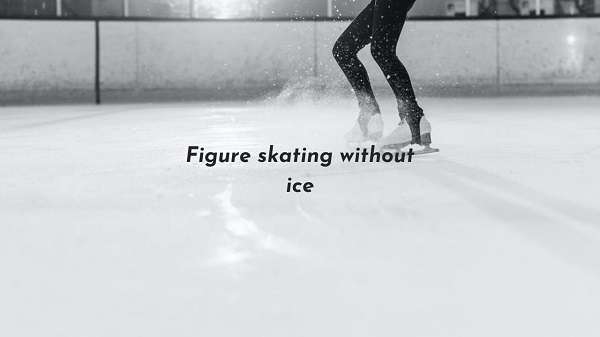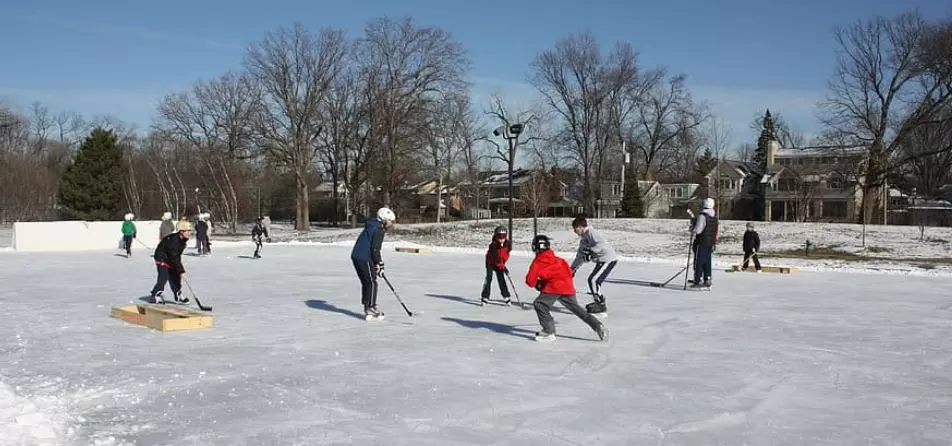Last updated on April 7th, 2022 at 09:10 pm
Skaters who want to be the greatest on the rink will need to conduct some off-ice training. Every exercise that promotes core body strength, flexibility, or stamina can assist you in improving your performance on the ice. Off-ice training options for skaters include Pilates, yoga, gymnastics, and dance.
In my opinion, there are two key ways to practice ice skating on the rink: rollerblading cross-training and dryland training sessions. In that they employ comparable stops and turns, rollerblading and ice skating are connected to skating disciplines.
As a result, you may practice these tactics on rollerblades before moving on to ice skates. Each skater has a distinct degree of talent, as well as various objectives and timetables. The training requirements and routines are in line with them.
A recreational skater, for example, might be content with a once-weekly class. Five days a week would be practiced by someone practicing for contests. As a result, only you have control over your practice and growth. On the rink, the goal is to enhance flexibility, strength, and balance consistency.
Keynote
Skaters may improve their balance and core strength on the rink before attempting edging, crossovers, and other drills on the ice. The biggest error adults make when they get onto the ice, she continues, is tightening up out of apprehension.
In some cases, falls may become considerably more painful as a result of your strained muscles’ inability to absorb impact. You’ll go a long way if you keep your knees bent, stay low to the ice, and learn how to fall and get back up.
How to improve figure skating skills without ice
In this section, we will be looking at distinct methods to improve your figure skating. These methods focus on improving specific techniques that can improve your skills tremendously as a skater.
According to research, limber muscles mean not just more fluid ice motions, but also fewer falls. I suggest the lower-body stretches below, which you can do at home as part of your workout. Practice these motions every day after a short dynamic warm-up, such as running or jumping jacks.
Balance
This activity develops the strength and balance needed to stay upright on the ice. Include this three-part motion in your workout three times a week. Pose with your feet hip-distance apart on the curved side of a BOSU ball. Squat with palms facing ahead and hands in front of you, elbows bent.
Hold your squat by rotating your body and head in the same direction while moving your hands to the left and right. In each direction, repeat 10 times. Standing on the BOSU ball, lift your right foot and tap it on the right side of the floor. Repeat with the left leg and return to the middle. Perform 20 repetitions on each side, alternating sides.
The Master falls and recovers.
While you learn how to fall appropriately, you’ll be more prepared to avoid harm if you fall suddenly. It’s important to land on a more muscular area of your body rather than your hands. Begin your practice off the ice, initially without skates and later with skates.
Expert tips:
- Fall to the side, with your buttocks, hips, and upper arms taking the brunt of the fall.
- Reposition yourself on all fours, using your hands to climb back up.
- Move one foot in front of the other, then the other.
- Gradually stand up, keeping your glutes tight and your knees bent for support.
- Put your hands in front of you, bend your knees slightly, and squat while wearing gloves and wrist protection.
Edging
Building strong balance and strength on your blade edges can give you confidence on the ice. Start each rink session with this practice once you’ve mastered stability skating.
Skate from one end to the other of the rink. Concentrate on maintaining balance on the skate’s outer edge. Skate ahead for three more steps, then switch legs and repeat. Make sure to keep your knees bent, your hips down, and your body low to the ice.
Switch legs to complete five trips up and down the ice, progressively improving your strength and stamina.
The 7 best ice skating exercises for beginners
Figure skating necessitates exceptional hip and knee flexibility while maintaining core and pelvic stability. These exercises can help you improve hip mobility while maintaining correct posture and core strength.
- Stretching your hamstrings while standing
- Skipping
- Shifts in rotation
- Strengthening your quads while walking
- Hip stretches while walking.
- Balance/single-leg deadlift
- Squat jumps, lunge leaps, or star jumps are all good options.
None of these workouts require any extra equipment and can be done at home. Workouts that involve dumbbells, kettlebells, or even tins of beans can be added to increase the challenge. Whether you’re interested in learning how to ice skate, you may start by seeking out ice skating lessons online.





